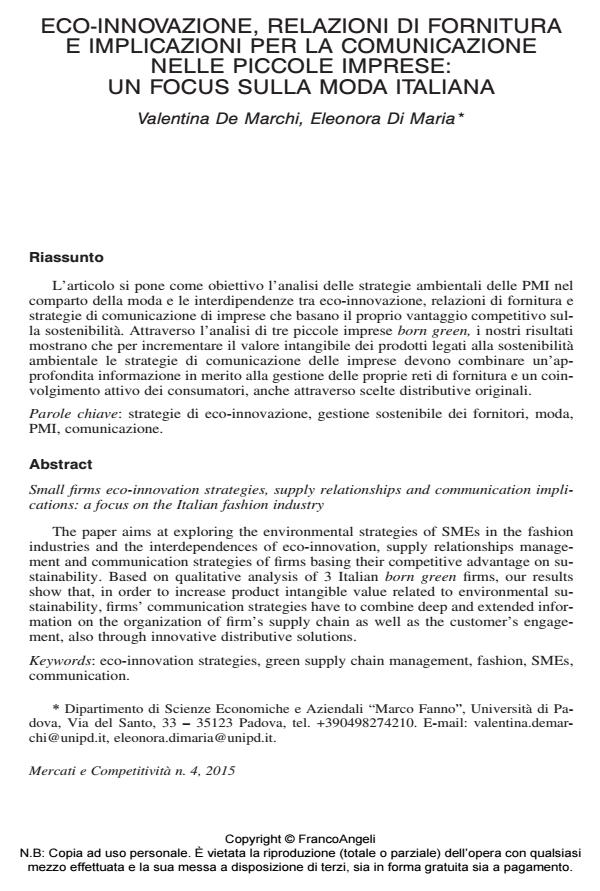Small firms eco-innovation strategies, supply relationships and communication implications: a focus on the Italian fashion industry
Journal title MERCATI E COMPETITIVITÀ
Author/s Valentina De Marchi, Eleonora Di Maria
Publishing Year 2015 Issue 2015/4
Language Italian Pages 18 P. 87-104 File size 109 KB
DOI 10.3280/MC2015-004005
DOI is like a bar code for intellectual property: to have more infomation
click here
Below, you can see the article first page
If you want to buy this article in PDF format, you can do it, following the instructions to buy download credits

FrancoAngeli is member of Publishers International Linking Association, Inc (PILA), a not-for-profit association which run the CrossRef service enabling links to and from online scholarly content.
The paper aims at exploring the environmental strategies of SMEs in the fashion industries and the interdependences of eco-innovation, supply relationships management and communication strategies of firms basing their competitive advantage on sustainability. Based on qualitative analysis of 3 Italian born green firms, our results show that, in order to increase product intangible value related to environmental sustainability, firms’ communication strategies have to combine deep and extended information on the organization of firm’s supply chain as well as the customer’s engagement, also through innovative distributive solutions.
Keywords: Eco-innovation strategies, green supply chain management, fashion, SMEs, communication
- Business innovation and Internationalisation: Focus on the Italian Coffee Industry Patrizia de Luca, Giovanna Pegan, in MERCATI E COMPETITIVITÀ 2/2016 pp.63
DOI: 10.3280/MC2016-002005 - Classifications of Innovations: Survey and Future Directions Mario Coccia, in SSRN Electronic Journal /2006
DOI: 10.2139/ssrn.2581746 - Economic and Social Studies of Scientific Research Nature and Origins Mario Coccia, in SSRN Electronic Journal /2006
DOI: 10.2139/ssrn.2581760
Valentina De Marchi, Eleonora Di Maria, Eco-innovazione, relazioni di fornitura e implicazioni per la comunicazione nelle piccole imprese: un focus sulla moda italiana in "MERCATI E COMPETITIVITÀ" 4/2015, pp 87-104, DOI: 10.3280/MC2015-004005